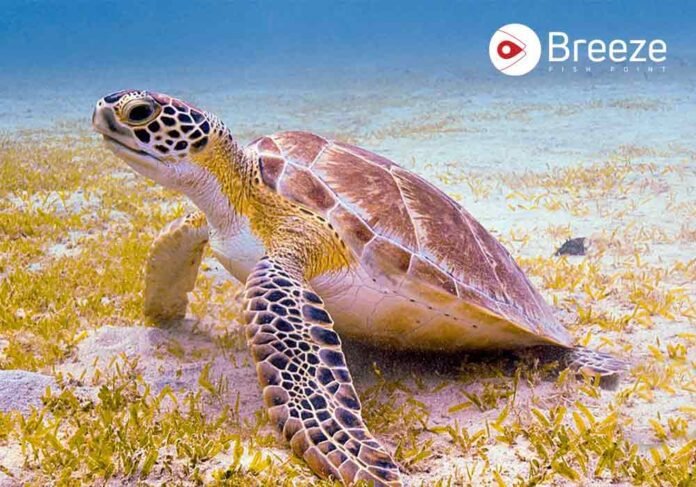Turtles, like the crab, are fascinating creatures that have roamed our planet for millions of years, carrying their homes on their backs. Their unique turtle anatomy sets them apart in the animal kingdom, blending ancient design with remarkable adaptations. Whether you’re curious about the sturdy shell of a sea turtle or wondering about the intricate turtle skeleton, this blog dives deep into the internal anatomy of a turtle.
Let’s explore how these incredible reptiles are built, from their scutes to their spines, and answer some burning questions along the way.
Table of Contents
What Makes Up a Turtle’s Body?

The turtle full body is a masterpiece of evolution, designed for survival on land and in water. Unlike most animals, turtles have a unique structure where their skeleton is fused with their shell, offering both protection and support. Here’s a breakdown of the key parts of a turtle:
- Shell: The defining feature, made up of the carapace (upper part) and plastron (lower part).
- Scutes: The tough, keratin-based plates covering the shell, like natural armor.
- Limbs: Vary by species—flippers for sea turtles, sturdy legs for tortoises.
- Head and Neck: House vital sensory organs and, in some species, a powerful jaw.
- Internal Organs: Heart, lungs, and digestive system, compactly arranged to fit within the shell.
This internal anatomy of a turtle is a perfect balance of form and function, allowing them to thrive in diverse environments, from oceans to deserts.
How Does a Turtle’s Shell Work?
The turtle’s shell is more than just a shield—it’s a living part of their body. The shell is composed of bone covered by scutes, which are made of keratin (the same material as human fingernails). The scute of a turtle protects the underlying bone and sheds periodically in some species, like a snake shedding its skin.
- Carapace: The domed upper shell, formed by fused ribs and vertebrae.
- Plastron: The flat underside, protecting vital organs.
- Bone Structure: The shell is not an exoskeleton like a crab’s but an endoskeleton, meaning it’s part of the turtle’s internal framework.
Fun fact: The shell is so integral that it’s connected to the turtle spine and ribs, making it impossible to “remove” without harming the turtle. A diagram of a sea turtle’s shell would show how these bony plates align perfectly to create a protective dome.
What Is the Plastron in Turtles?
The plastron of a turtle is the flat, bony structure on the underside of the shell. It’s like the turtle’s built-in belly armor. The plastron in turtles serves multiple purposes:
- Protection: Shields the heart, lungs, and other organs from predators.
- Support: Provides structural stability for movement.
- Species Variation: Some turtles, like the leatherback sea turtle, have a softer, leathery plastron compared to the hard, bony plastron of others.
The plastron is connected to the carapace by bridges of bone, creating a fully enclosed “box” that makes turtles one of nature’s most fortified creatures.
Do Turtles Have a Backbone?
Yes, turtles absolutely have a backbone! The turtle spine is a critical part of their anatomy, running along the length of the carapace. Here’s why the spine matters:
- Structural Core: The spine is fused to the carapace, providing rigidity to the shell.
- Flexibility: In some species, like sea turtles, the spine allows slight flexibility for swimming.
- Vertebral Connection: The vertebrae are uniquely modified to integrate with the shell, unlike any other vertebrate.
So, when you hear about “sea turtle bones,” the spine is a key player, ensuring the turtle’s body stays aligned and supported.
What’s the Deal with a Turtle’s Skeleton?
The turtle skeleton is a marvel of engineering. Unlike an exoskeleton turtle (a common misconception), the shell is part of the internal skeleton, with ribs and vertebrae fused into the carapace. Here’s a closer look:
- Ribs: Turtle ribs are flattened and fused to form the carapace, unlike the flexible ribs of mammals.
- Skull: The sea turtle skull is robust, designed to withstand pressure from biting or crushing food.
- Limb Bones: Adapted for specific lifestyles—sea turtles have flipper-like bones, while land turtles have sturdy, columnar legs.
A diagram of a sea turtle’s skeleton would reveal how the bones are intricately woven into the shell, creating a balance of strength and mobility. This structure protects against crushing turtles under predator attacks or environmental pressures.
Do Sea Turtles Have Flippers?
Yes, sea turtles have flippers, and they’re a game-changer for life in the ocean. Unlike the sturdy legs of land turtles, sea turtles have evolved flipper-like limbs for efficient swimming. Here’s what makes them special:
- Structure: Flippers are elongated, paddle-like limbs supported by modified bones.
- Function: They act like oars, propelling sea turtles through water with powerful strokes.
- Species-Specific: The leatherback sea turtle, for instance, has massive front flippers, the largest of any sea turtle, for long-distance travel.
These flippers make sea turtles agile swimmers, perfectly adapted to their aquatic world.
Are Turtles Herbivores?
Not all turtles are herbivores—it depends on the species. Let’s break it down:
- Herbivores: Some tortoises, like the Galápagos tortoise, primarily eat plants, grasses, and fruits.
- Omnivores: Many turtles, like the red-eared slider, eat both plants and small animals, such as insects or fish.
- Carnivores: Certain sea turtles, like the loggerhead, prefer jellyfish, crabs, and other marine life.
For example, the leatherback sea turtle’s diet is mostly jellyfish, which it captures with its sharp, beak-like mouth. This diversity in diet reflects the adaptability of turtles across different environments.
Can a Leatherback Sea Turtle Bite?
Oh, you bet a leatherback sea turtle bite can pack a punch! While leatherbacks are generally gentle giants, their mouths are designed for their diet of soft-bodied prey like jellyfish. Here’s what you need to know:
- Mouth Structure: Leatherbacks lack teeth but have sharp, backward-pointing spines in their throat to trap slippery prey.
- Bite Strength: Their jaws are strong enough to crush jellyfish and other soft organisms.
- Human Interaction: Bites to humans are rare, but their powerful jaws could cause injury if provoked.
So, while a leatherback’s bite isn’t meant for aggression, it’s wise to give these ocean travelers their space.
What Does a Sea Turtle’s Skull Look Like?

The sea turtle skull is a fascinating piece of anatomy, built for survival in harsh marine environments. Here’s what stands out:
- Shape: Streamlined and sturdy, designed to reduce water resistance.
- Jaw Structure: Strong jaws with a beak-like mouth for crushing or slicing food.
- Sensory Features: Large eye sockets for excellent vision and nasal passages for smelling underwater.
The skull’s design varies slightly by species, but it’s always a balance of strength and functionality, perfectly suited for their lifestyle.
How Do Turtle Ribs Function?
Turtle ribs are unlike those of any other animal. Instead of being flexible, they’re fused into the carapace, forming the structural backbone of the shell. Here’s how they work:
- Support: Ribs provide the framework for the carapace, distributing weight evenly.
- Protection: They encase vital organs, making the shell a fortress.
- Limited Movement: Unlike human ribs, turtle ribs don’t move for breathing; turtles rely on muscles to expand their lungs.
This unique adaptation makes the turtle’s shell both a shield and a skeletal cornerstone.
What Are the Scientific Names of Turtles?
Common Name | Scientific Name |
Green Sea Turtle | Chelonia mydas |
Leatherback Sea Turtle | Dermochelys coriacea |
Loggerhead Sea Turtle | Caretta caretta |
Hawksbill Sea Turtle | Eretmochelys imbricata |
Box Turtle | Terrapene carolina |
Red-Eared Slider | Trachemys scripta elegans |




